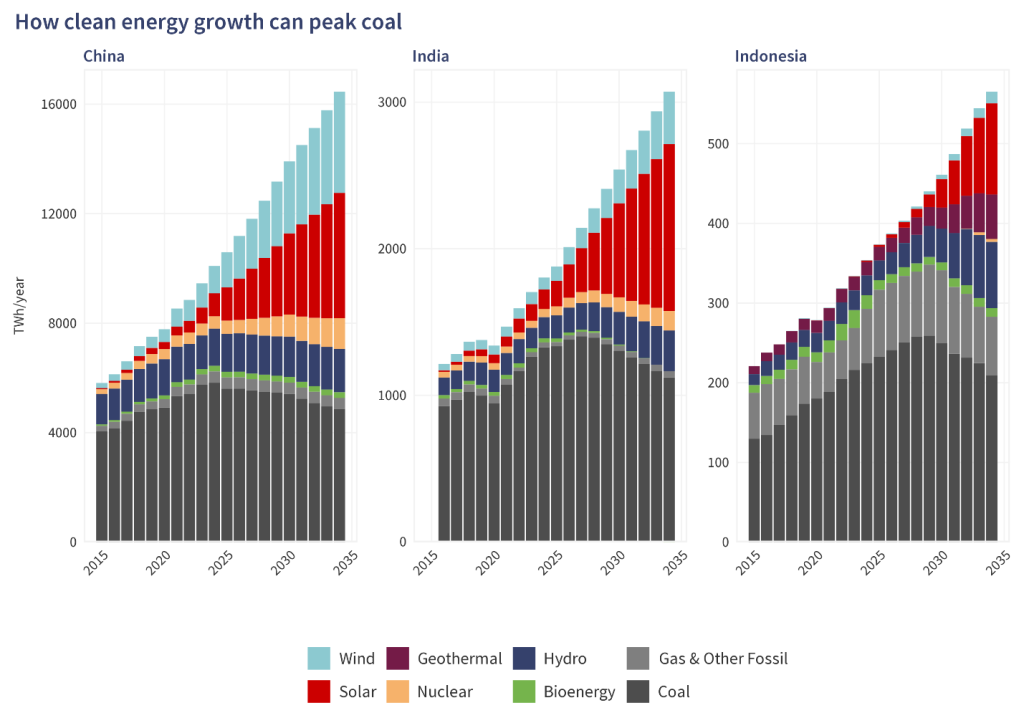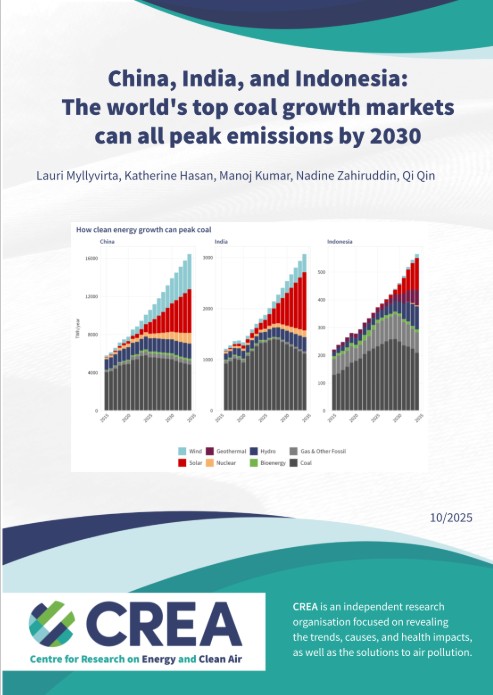China, India, and Indonesia – the three countries responsible for the largest increases in CO2 emissions and in coal-fired power generation in the decade since the Paris agreement was negotiated – now have a path to peaking power sector emissions thanks to their realised clean energy growth and ambitions. China’s clean energy growth could keep emissions below their 2024 level, while India and Indonesia can peak before or around 2030.
Without the emissions growth in China, India, and Indonesia, global energy sector emissions would have already peaked and begun to decline before 2020. Coal consumption increased 15% in China, 42% in India, and 150% in Indonesia from 2015 to 2024, while consumption in the rest of the world fell 23%. The prospect of peaking power sector coal use and emissions in all three countries is nothing short of a global breakthrough, as they accounted for 73% of global coal consumption in 2024.

Figure 1 — Projected power generation by source under current clean energy trends and targets, in China, India and Indonesia, 2015 to 2034
However, one major obstacle common across China, India, and Indonesia is the continued addition of new coal-fired power plants and mining capacity. The new clean energy infrastructures being built in each country creates powerful resistance from the coal industry, which will only intensify once coal demand begins to contract. This political and economic inertia threatens to slow the clean energy transition and lock in high-carbon energy systems in these countries for decades to come, making a rapid post-peak decline in emissions far from guaranteed.
Peaking emissions in the power sector is only the first step towards the carbon neutrality goals set by China and India, and towards coal phase-out and net zero as targeted by Indonesia. Once annual clean energy additions reach the level required to start pushing down power generation from fossil fuels, sustaining this level requires major policy steps, such as reforming power systems to accommodate a rapidly increasing share of solar and wind, and starting to close down fossil fuel-fired power plants to make space for clean technologies.
In all three countries, both a rapid phase-down post-peak and a long, drawn-out plateau or even a rebound in coal use are distinct possibilities.
